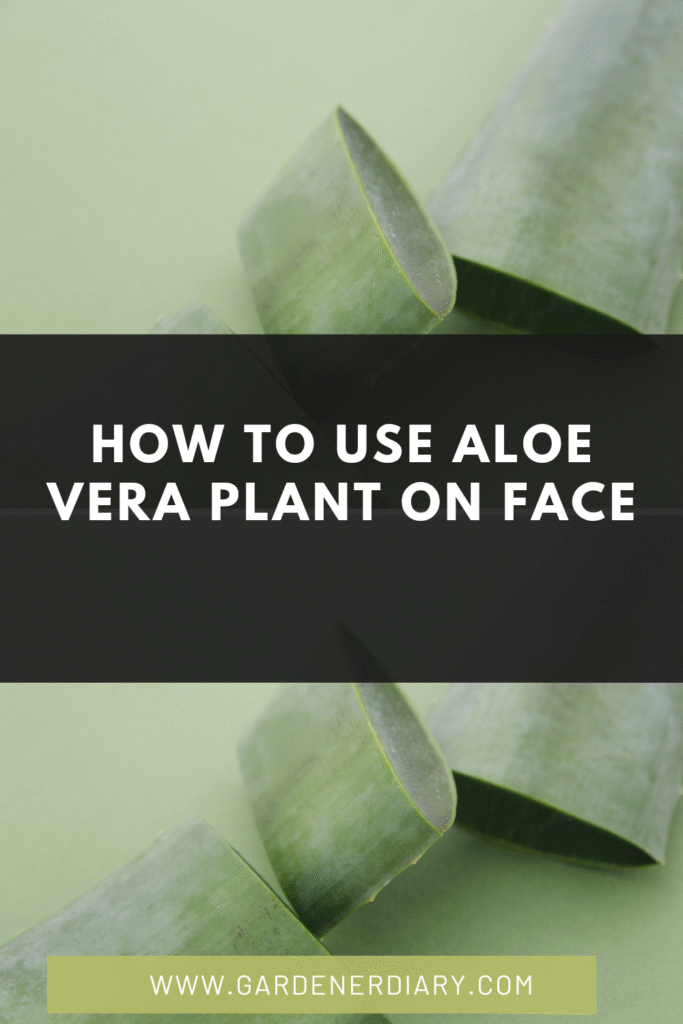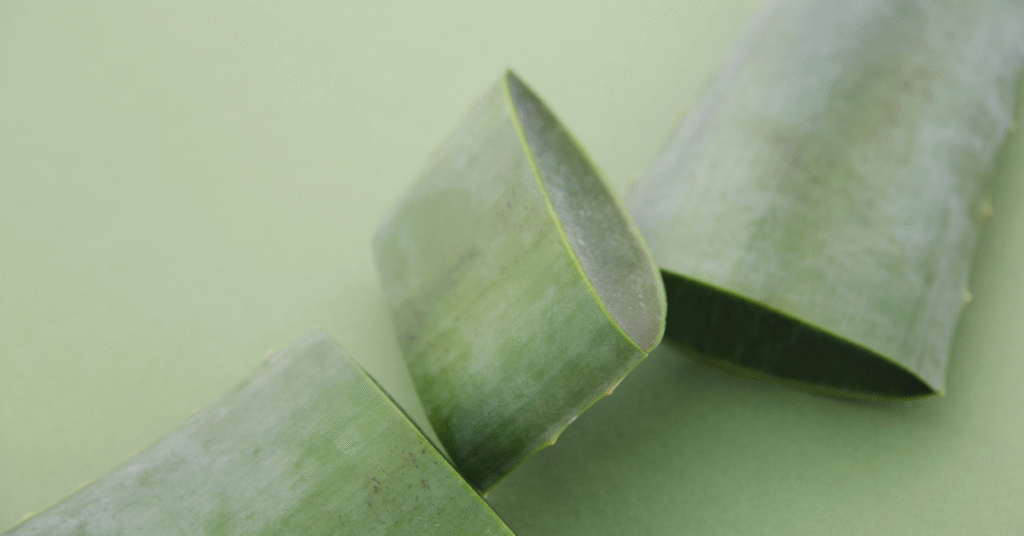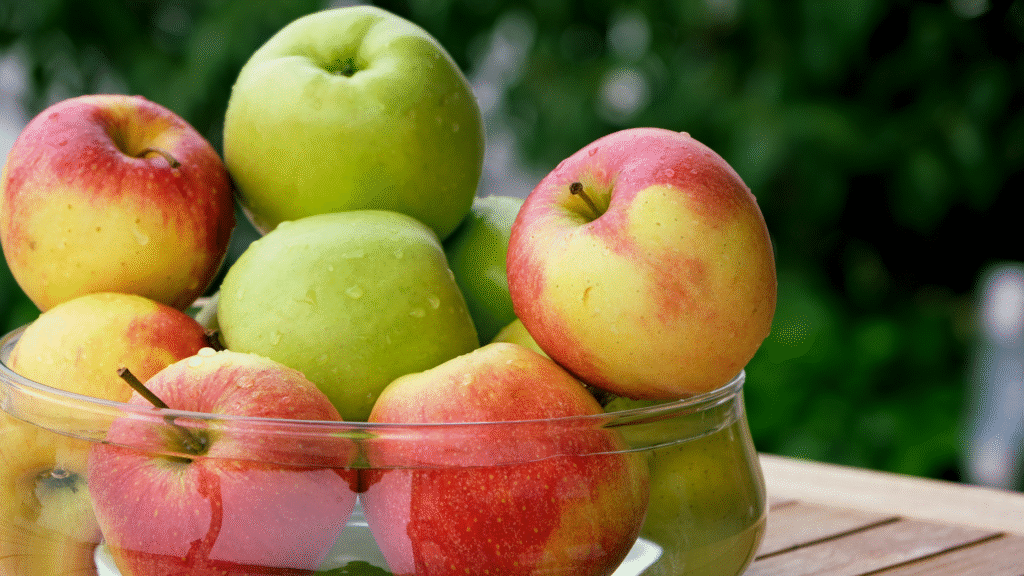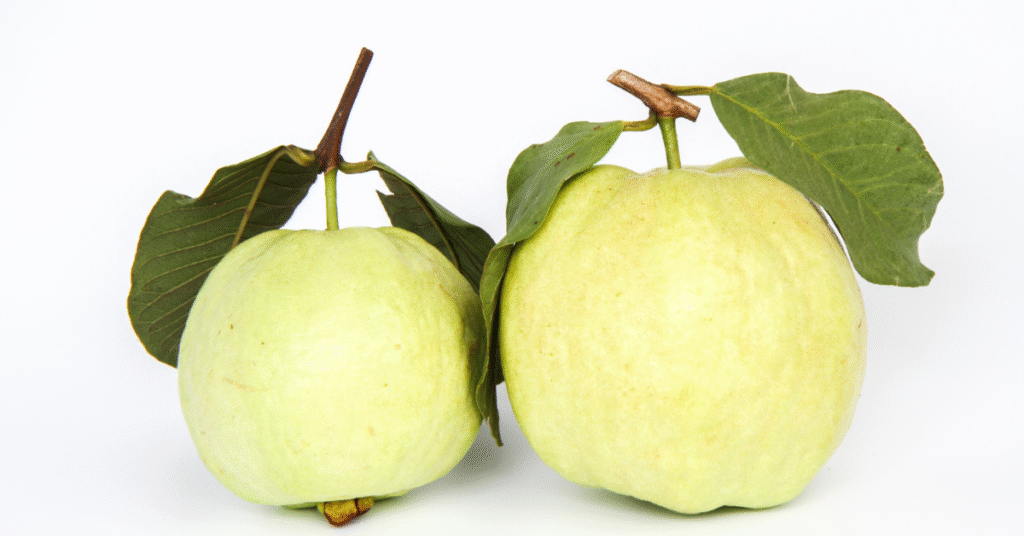How to Use Aloe Vera Plant on Face: Your Ultimate Guide to Natural Skincare
For centuries, the Aloe Vera plant has been a revered staple in natural beauty and traditional medicine. Its thick, fleshy leaves contain a clear, gelatinous pulp packed with over 75 active compounds, including vitamins, enzymes, minerals, and amino acids. This potent blend contributes to its remarkable ability to soothe, heal, and rejuvenate the skin. While many commercial products feature aloe vera, learning how to use aloe vera plant on face directly from the source offers the purest form of this natural wonder, free from additives and preservatives.
This comprehensive guide will walk you through everything you need to know, from harvesting and preparing fresh aloe vera gel to various effective ways to incorporate it into your daily facial skincare routine for a healthier, more radiant complexion.
Watch this video for a quick visual guide on how to prepare and apply fresh aloe vera to your face.
Why Use Fresh Aloe Vera from the Plant on Your Face?
While commercial aloe vera products are convenient, using fresh gel directly from the plant offers several distinct advantages:
- Purity: You get 100% pure aloe vera gel, free from preservatives, fragrances, dyes, alcohol, or other additives that can sometimes irritate sensitive skin.
- Potency: The active compounds in fresh gel are at their peak, ensuring maximum therapeutic benefits.
- Cost-Effective: An aloe vera plant is relatively inexpensive to buy and easy to maintain, providing a continuous supply of fresh gel.
- Direct Control: You have complete control over the preparation process, ensuring the removal of the yellowish latex (aloin) which can be irritating.
The extensive benefits of aloe vera for skin are truly unlocked when using it in its purest form.
Understanding the Aloe Vera Leaf: Gel vs. Latex
Before you start, it’s essential to understand the two main components of an aloe vera leaf:
- Aloe Gel: This is the clear, mucilaginous substance found in the inner part of the leaf. It’s rich in polysaccharides, vitamins, enzymes, and minerals, making it beneficial for topical application.
- Aloe Latex (Aloin): This is a yellowish, bitter liquid found just beneath the outer skin of the leaf. Aloin is a strong laxative when ingested and can cause skin irritation or allergic reactions in some individuals when applied topically. It’s crucial to properly drain and remove this latex before using the gel on your face.
Step-by-Step: How to Harvest & Prepare Fresh Aloe Vera Gel
Proper preparation ensures you get the pure, beneficial gel without the irritating latex.
- 1. Choose a Mature Leaf: Select a thick, healthy, and mature leaf from the outer part of your aloe vera plant. Older leaves contain more gel and higher concentrations of active compounds.
- 2. Cut & Drain the Latex: Using a clean, sharp knife, cut the chosen leaf as close to the base of the plant as possible. Immediately stand the cut end of the leaf upright in a cup or bowl for 10-15 minutes. This allows the yellowish aloin (latex) to drain out. Discard this yellowish liquid. This step is critical for preventing skin irritation.
- 3. Clean the Leaf: After draining, rinse the leaf thoroughly under cool running water to remove any remaining latex residue from the surface.
- 4. Remove Spiny Edges: Lay the leaf flat on a clean cutting board. Carefully slice off the spiny edges along both sides of the leaf.
- 5. Extract the Gel: Slice the leaf lengthwise down the middle. Using a spoon or a dull knife, gently scoop out the clear, gelatinous inner gel. Try to avoid scraping any of the yellowish-green outer skin, as this may contain residual aloin.
- 6. Process (Optional): For a smoother consistency, you can blend the scooped gel in a blender for a few seconds.
- 7. Store Excess Gel: Place any unused pure gel in an airtight container and store it in the refrigerator for up to a week. For longer storage, you can blend the gel and freeze it in ice cube trays.
How to Use Fresh Aloe Vera Gel on Your Face: Applications
Once you have your pure, fresh aloe vera gel, you can incorporate it into various steps of your skincare routine.
As a Gentle Cleanser
Aloe vera’s natural saponins give it mild cleansing properties.
- How to Use: Apply a small amount of fresh aloe vera gel directly to your damp face. Gently massage in circular motions for 1-2 minutes. Rinse thoroughly with lukewarm water and pat dry.
- Benefits: Cleanses without stripping natural oils, leaving skin feeling soft and refreshed.
As a Hydrating Toner
After cleansing, aloe vera can help balance skin pH and provide a burst of hydration.
- How to Use: After cleansing, apply a thin layer of aloe vera gel to your face using a cotton pad or your fingertips. Allow it to absorb fully before proceeding with other products.
- Benefits: Hydrates, soothes, and prepares the skin for subsequent treatments.
As a Lightweight Moisturizer
Aloe vera gel is an excellent non-greasy moisturizer, especially for oily or combination skin.
- How to Use: Apply a thin, even layer of aloe vera gel to your face and neck after cleansing and toning. For very dry skin, apply a heavier cream or facial oil on top of the aloe vera once it has absorbed.
- Benefits: Provides deep hydration, calms irritation, and leaves skin feeling supple without clogging pores.
As a Soothing Face Mask
Combine aloe vera with other natural ingredients for targeted mask treatments.
- For Hydration: Mix 1 tbsp aloe vera gel with 1 tsp honey. Apply to face for 15-20 minutes, then rinse.
- For Brightening: Mix 1 tbsp aloe vera gel with a pinch of turmeric powder and a few drops of lemon juice (use only at night due to photosensitivity of lemon). Apply for 10-15 minutes, then rinse.
- For Calming: Mix 1 tbsp aloe vera gel with 1 tsp plain yogurt. Apply for 15-20 minutes, then rinse.
- Benefits: Delivers concentrated nutrients and targeted benefits depending on added ingredients.
Targeted Applications for Specific Skin Concerns
For Acne & Blemishes:
Aloe vera’s antibacterial and anti-inflammatory properties make it effective for managing breakouts.
- How to Use: Apply a small dab of pure aloe vera gel directly to individual pimples or affected areas. Leave on overnight or rinse after 30 minutes.
- Benefits: Reduces redness, swelling, and helps dry out blemishes. Can also aid in fading post-acne marks.
For Sunburn & Redness:
Aloe vera is a classic remedy for soothing sun-damaged skin.
- How to Use: Apply a generous, cool layer of aloe vera gel to sunburnt areas. Reapply frequently for continued relief.
- Benefits: Provides immediate cooling, reduces pain and inflammation, and helps prevent peeling.
For Dry & Irritated Skin:
Its hydrating and soothing properties are perfect for dry, flaky, or sensitive skin.
- How to Use: Apply a thicker layer of aloe vera gel as a hydrating mask, leaving it on for 20-30 minutes before rinsing. Or, apply a thin layer before your regular moisturizer.
- Benefits: Replenishes moisture, calms redness, and reduces discomfort.
For Anti-Aging & Fine Lines:
Aloe vera’s antioxidants and collagen-boosting properties can contribute to youthful-looking skin.
- How to Use: Apply a thin layer to your face and neck daily, especially before bed.
- Benefits: Helps protect against free radical damage, improves skin elasticity, and can reduce the appearance of fine lines over time.
For Dark Spots & Scarring:
While not a quick fix, consistent use can help fade hyperpigmentation and improve scar appearance.
- How to Use: Apply a small amount directly to dark spots or minor scars daily.
- Benefits: Promotes cell regeneration, which can gradually replace damaged, discolored skin cells.
Important Precautions & Patch Testing
While using fresh aloe vera from the plant offers purity, it’s still essential to exercise caution.
- 1. Always Perform a Patch Test: This is the most crucial step. Before applying aloe vera to your entire face, apply a small amount of the prepared gel to an inconspicuous area (e.g., behind your ear or on your inner forearm) and wait 24-48 hours. If you experience any redness, itching, swelling, or irritation, discontinue use.
- 2. Ensure Aloin/Latex Removal: As discussed, the yellowish latex can be irritating. Always drain the leaf properly before extracting the clear gel.
- 3. Potential Allergic Reactions: Even pure aloe vera gel can cause allergic reactions in some individuals, especially those sensitive to plants in the Liliaceae family (like garlic, onions, or tulips). For a comprehensive understanding of potential reactions, refer to our guide on side effects of aloe vera on face.
- 4. Photosensitivity: While aloe vera itself isn’t highly photosensitizing, it’s always wise to apply a broad-spectrum sunscreen when using any new topical product, especially if you’re going outdoors.
- 5. Avoid Open Wounds: While aloe vera can be used on minor wounds (as detailed in how to use aloe vera on wounds), avoid applying it to deep cuts, severe burns, or infected wounds without medical advice.
- 6. Consult a Dermatologist: If you have a pre-existing skin condition (e.g., severe eczema, rosacea), or if any irritation persists or worsens, consult a dermatologist before using aloe vera on your face.
Tips for Best Results
- Consistency is Key: Regular application yields the best results.
- Cleanliness: Always use clean hands and tools when preparing and applying aloe vera.
- Listen to Your Skin: Pay attention to how your skin reacts. If you notice any adverse effects, stop using it.
- Complementary Care: Aloe vera can be a wonderful addition, but it doesn’t replace a complete skincare routine including cleansing, moisturizing, and sun protection. For more natural remedies and health insights, you might also find our article on list of diseases cured by aloe vera (or rather, conditions it can help manage) interesting.
Conclusion: Embrace Natural Radiance with Aloe Vera
Learning how to use aloe vera plant on face is a rewarding step towards a more natural and holistic skincare approach. By carefully harvesting and preparing the pure gel, you unlock a treasure trove of beneficial compounds that can hydrate, soothe, heal, and rejuvenate your complexion. From a simple daily moisturizer to targeted treatments for specific concerns like acne or sunburn, fresh aloe vera offers a versatile and effective solution.
Remember the importance of a patch test and proper preparation to ensure a safe and positive experience. With a little care and consistency, the humble aloe vera plant can become your go-to natural ally for achieving radiant, healthy skin. Embrace this green gift from nature and let your natural beauty shine!



